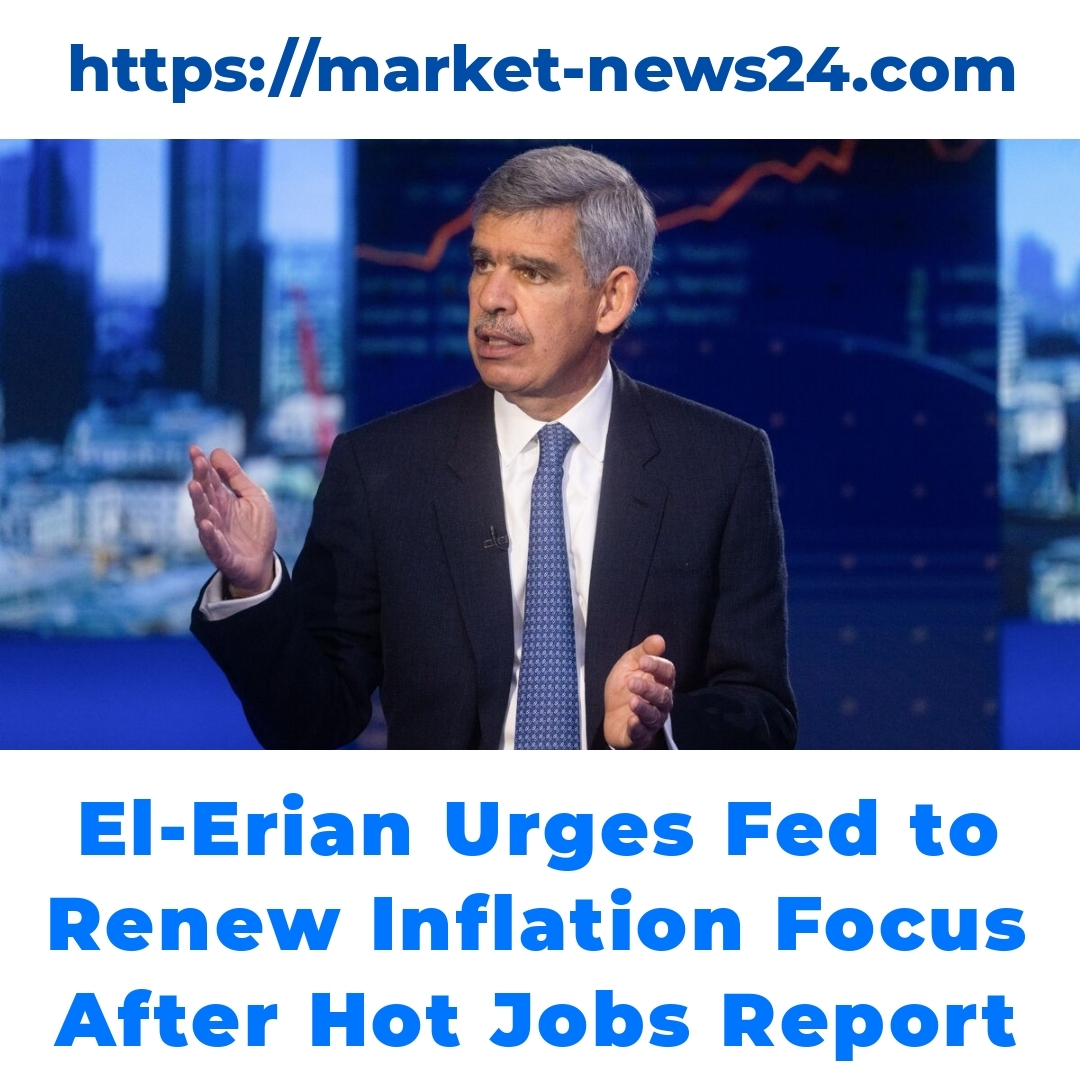The Federal Reserve plays a crucial role in managing inflation, ensuring economic stability. Recent comments from economist Mohamed El-Erian highlight a renewed focus on inflation following the September jobs report, which underscored the challenges of rising prices. Understanding the dynamics of Federal Reserve inflation is essential for navigating today’s economic landscape.


Understanding Federal Reserve Inflation
When we talk about Federal Reserve inflation, we’re referring to how the Federal Reserve actively manages inflation to ensure economic stability. This is crucial because if prices rise too quickly, it can create serious problems for everyday Americans. The goal here is to maintain what’s known as price stability, which is all about keeping inflation in check so that your money retains its value over time.
The significance of managing this inflation cannot be overstated. It affects everything— from how much you pay for groceries to the interest rates on your mortgage. So, when inflation spikes, it means rising prices for consumers, and that can really strain budgets. Understanding how the Federal Reserve tackles these challenges is vital for navigating our current economic landscape.
September Jobs Report: An Economic Indicator
The September jobs report was a significant piece of economic data that gave us insight into the current job market. It showed some positive trends, including job creation and unemployment rates. But it also raised a few eyebrows regarding the implications for inflation. When more people are employed, there’s generally more money circulating in the economy, which can lead to increased demand for goods and services.
This increased demand could further exacerbate rising prices, putting even more pressure on the Federal Reserve to respond appropriately. So, the stats from the jobs report aren’t just numbers; they’re indicators of how the economy might behave in relation to inflation. For example, the rate of wage growth is one statistic that often gets a lot of attention. If wages are climbing, businesses might pass that cost onto consumers, contributing to inflation.
The Impact of the September Jobs Report on Inflation
The September jobs report has intensified concern over inflation. As we observe more job opportunities and lower unemployment rates, it’s important to consider how these factors contribute to increased consumer spending. When people have jobs and money, they tend to spend more, which can drive prices higher—this is where inflation becomes a significant issue.
Analyzing economic indicators such as consumer spending trends or even the price of commodities can give us a glimpse into inflation’s trajectory. Understanding the impact of the jobs report on inflation is essential, because if the economy continues to grow rapidly, we might see even more pressure on prices moving forward.
Monetary Policy and Interest Rates: Tools for the Federal Reserve
The Federal Reserve utilizes various tools to influence inflation rates, with monetary policy being one of the most crucial. This includes adjusting interest rates, which can either stimulate the economy or cool it down. For instance, lowering interest rates makes borrowing cheaper, encouraging spending and investment. Conversely, raising rates can help alleviate inflation by discouraging excessive borrowing.
This dance around interest rates is the Federal Reserve’s way of managing rising prices effectively. The Federal Reserve’s response to inflation can be proactive, adjusting rates before inflation spirals out of control. It’s a delicate balance they must strike; they need to foster economic growth without letting inflation run rampant.
Combating Rising Prices: Strategies for the Federal Reserve
As inflation continues to present challenges, the Federal Reserve is developing strategies to combat rising prices. These may include aggressive interest rate hikes or alternative monetary policies. The Fed’s past successes—like actions taken to combat hyperinflation in previous decades—serve as lessons for how they might approach current inflationary pressures.
Implementing measures now is crucial. We’ve seen how quickly inflation can rise if left unchecked. Considering how the Fed can combat rising prices involves revisiting historical data and understanding what has worked before. The current situation calls for a thoughtful, measured approach, balancing growth with spending control.
Future Outlook: Inflation and the Job Market
Looking ahead, the interaction between the job market and inflation is a vital area of focus. As we digest the latest job numbers, we must speculate on inflation’s future trajectory. If the job market continues to grow, we might face ongoing inflation concerns, especially if wage growth remains robust. In essence, there’s a lot riding on how well the Federal Reserve can keep inflation in check following strong job reports.
After the September job numbers, maintaining a balance becomes crucial. Ongoing inflation after these jobs reports will likely continue to challenge policymakers at the Federal Reserve. They’ll have to consider various factors, such as economic growth and consumer spending, when deciding on future monetary policy.
Conclusion
In conclusion, the Federal Reserve’s renewed focus on inflation is more important than ever. With job reports closely linked to inflation rates, understanding this relationship is critical for predicting economic outcomes. As we move forward, it’s clear that the Federal Reserve will need to navigate these waters carefully to maintain both price stability and economic growth.
Staying informed on economic indicators, especially those related to the Federal Reserve inflation, can empower you to make better financial decisions. Keep an eye on how the Fed responds to this ever-changing economic landscape, as their decisions will play a key role in shaping our financial futures.
Frequently Asked Questions (FAQ)
What is Federal Reserve inflation?
Federal Reserve inflation refers to how the Federal Reserve manages inflation levels to ensure economic stability. Its goal is to keep prices stable so that money maintains its value over time.
Why is it important to manage inflation?
Managing inflation is crucial because it affects the cost of everyday items, from groceries to mortgage interest rates. High inflation can strain household budgets and lead to economic challenges.
How does the September jobs report relate to inflation?
The September jobs report provides insights into the job market, showing trends like job creation and unemployment rates. More jobs usually mean more money in the economy, which can increase demand for goods and services, potentially driving up prices.
What are the tools the Federal Reserve uses to manage inflation?
The Federal Reserve uses various tools to influence inflation, with interest rates being a primary method. Lowering interest rates encourages borrowing and spending, while raising rates can help cool down inflation.
What strategies are the Federal Reserve considering to combat rising prices?
The Federal Reserve may consider aggressive interest rate hikes or alternative monetary policies to combat inflation. Learning from past successes is essential to address current inflationary pressures effectively.
What is the future outlook on inflation and the job market?
The future interaction between the job market and inflation is crucial. If the job market continues to improve, inflation concerns may persist, primarily if wage growth is strong. The Federal Reserve will need to carefully manage these factors moving forward.
How can individuals stay informed about inflation and the Federal Reserve’s actions?
Staying informed on economic indicators related to Federal Reserve inflation can help you make better financial decisions. Monitoring how the Fed responds to economic changes is vital for understanding potential impacts on personal finance.





